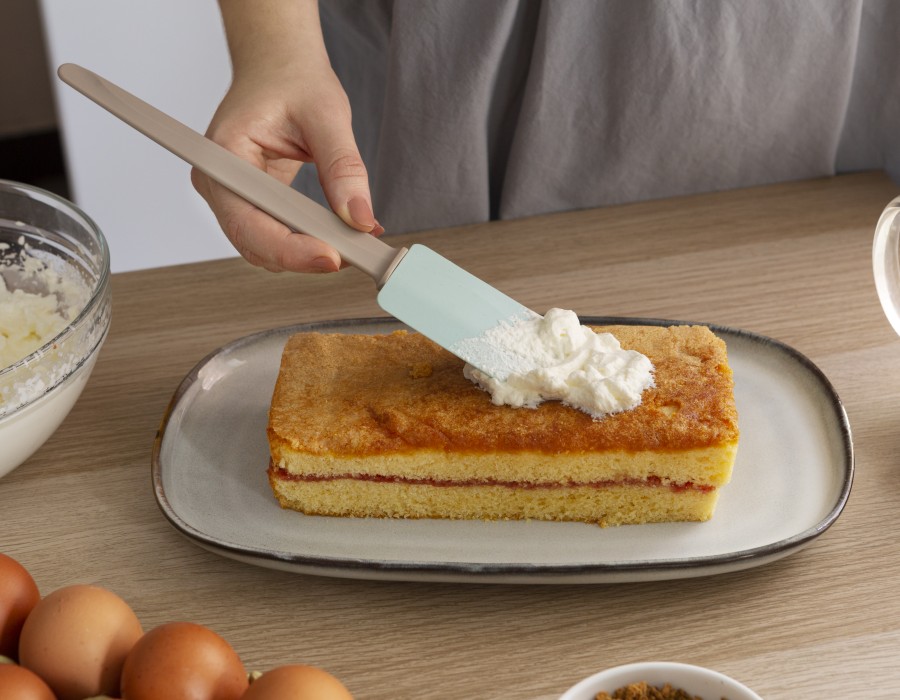If you love baking, chances are you've experimented with different cake recipes—from rich chocolate layers to delicate chiffon creations. But one cake that often piques the curiosity of both amateur and professional bakers is the genoise sponge. Known for its light, airy texture and versatility, this classic French-Italian sponge has unique characteristics that set it apart from other cakes. Let's dive into what makes the genoise sponge special and how it differs from other popular cake types.
1. A Cake with No Chemical Leavening Agents
Unlike many cakes that rely on baking powder or baking soda to rise, the genoise sponge achieves its lift entirely through whisked eggs. The batter is made by whipping whole eggs (sometimes with an extra yolk) and sugar until the mixture becomes pale, thick, and triples in volume. This process incorporates air into the batter, which creates the cake's signature lightness without the help of chemical leaveners.
In contrast, cakes like Victoria sponge or American butter cakes usually depend on a combination of creamed butter and chemical leaveners to achieve volume and a tender crumb.
2. Minimal Fat Content for a Delicate Texture
Another defining feature of a genoise sponge is its low fat content. While a small amount of melted butter is folded into the batter for flavor and moisture, the overall fat level is much lower than in butter-rich cakes.
This makes the texture light and slightly dry, which is perfect for soaking up flavored syrups or liqueurs—something the genoise is famous for in layered desserts like French Gâteau or Italian Cassata.
3. A Versatile Base for Elegant Desserts
Because of its neutral flavor and absorbent crumb, the genoise sponge serves as an excellent foundation for a variety of fillings and frostings. Bakers often brush it with flavored syrup, layer it with pastry cream or mousse, and finish it with a glossy glaze or fresh fruit.
On the other hand, more decadent cakes like pound cake or mud cake have such distinct flavors and dense textures that they often stand alone without much embellishment.
4. The Mixing Method Sets It Apart
The genoise requires a careful folding technique to preserve the air bubbles created during the egg-whipping stage. This step is crucial—overmixing can deflate the batter, resulting in a dense and heavy cake instead of the desired light texture.
Many other cakes, such as red velvet or carrot cake, can handle more vigorous mixing because the structure comes from a combination of flour gluten development and chemical leavening agents, not just aerated eggs.
5. A Classic in European Patisserie
Originating in Italy and perfected in France, the genoise sponge is a staple in European patisserie. It's a skill every pastry chef masters early on, as it forms the basis of countless sophisticated desserts. Its elegance lies in its simplicity—just eggs, sugar, flour, and a touch of butter—yet the technique required makes it a true baker's test of skill.
In contrast, many popular cakes in the USA and UK are more forgiving and beginner-friendly, such as banana bread or chocolate fudge cake, where minor errors in mixing or baking don't drastically affect the result.
Final Thoughts for Baking Enthusiasts
If you're looking to elevate your baking skills, mastering the genoise sponge is a fantastic challenge. It teaches precision, patience, and an appreciation for the art of building structure without shortcuts.
At CakeFlix, we're passionate about helping bakers—whether you're in the USA, UK, or beyond—explore techniques that bring out the best in your creations. With the proper guidance, you can transform a humble genoise into a show-stopping dessert that wows your family, friends, or customers.
So, next time you're deciding what cake to bake, why not give the genoise sponge a try? Its airy elegance and versatility might make it your new favorite.






Comments